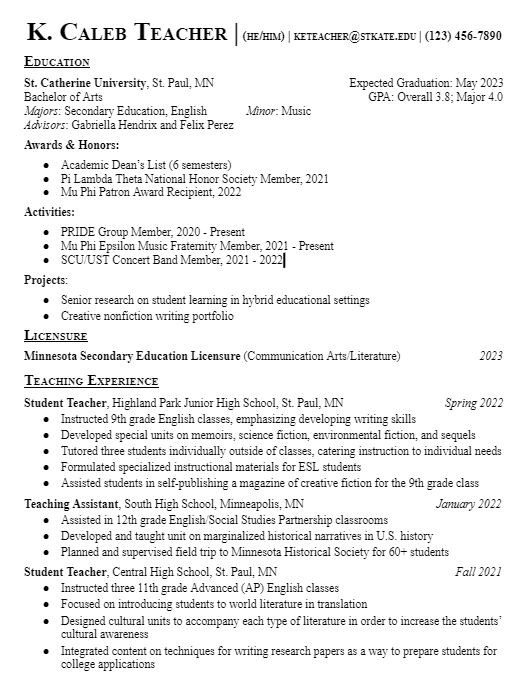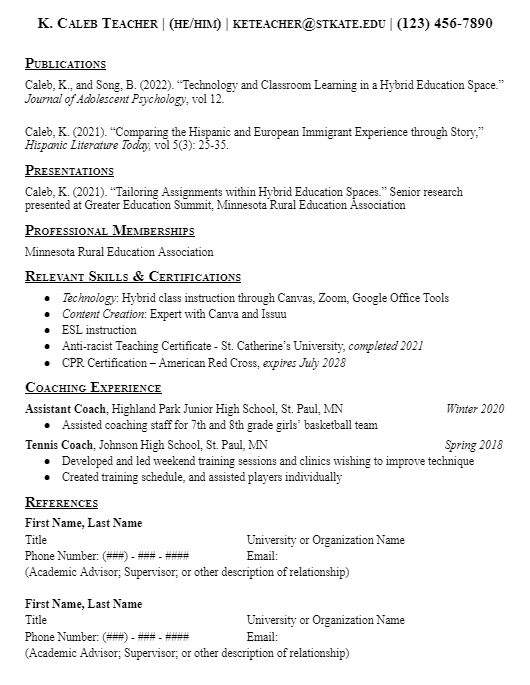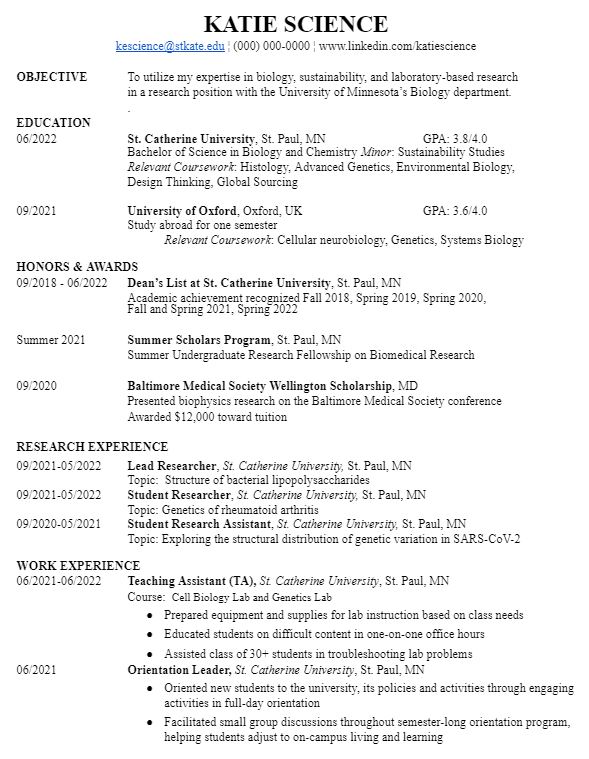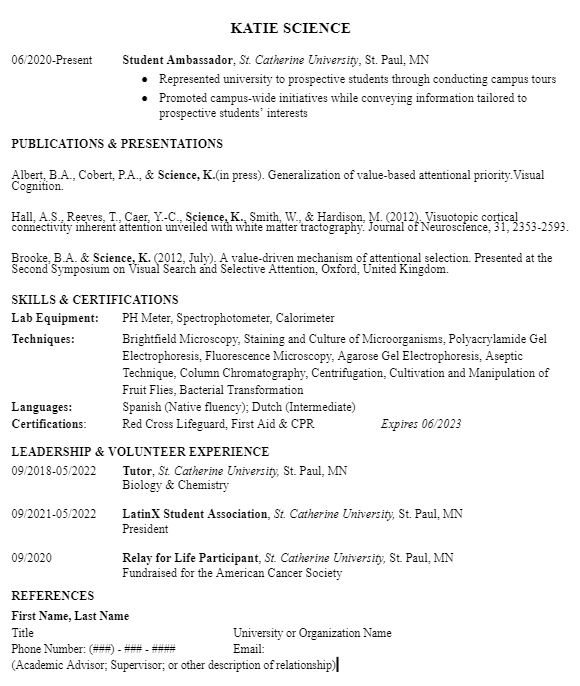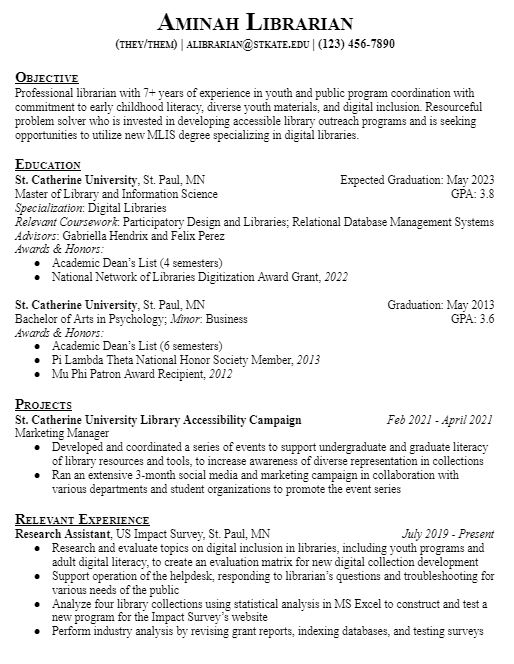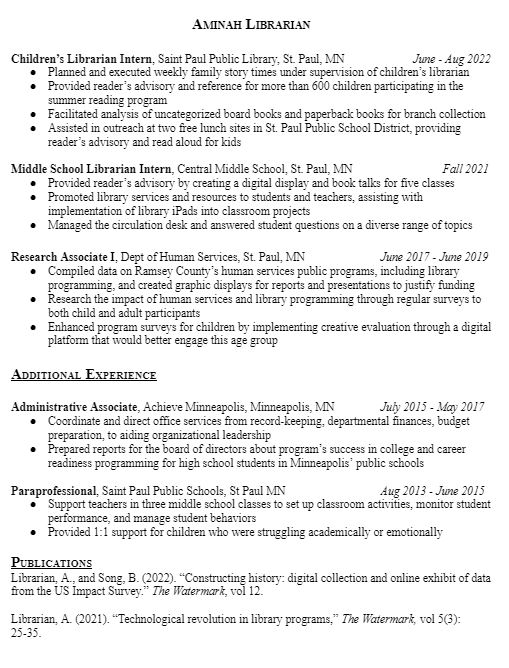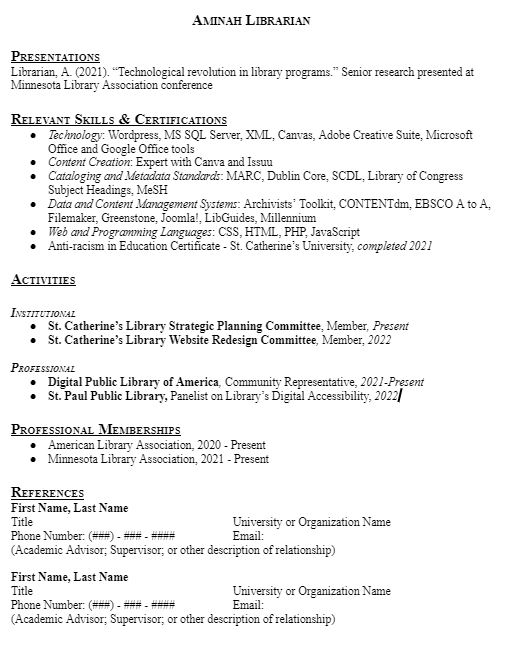
Curriculum Vitae (CV)
What is a Curriculum Vitae (CV)?
A Curriculum Vitae (CV), much like a resume, is meant to give an overview of your experiences, education, and accomplishments; however, CVs detail a much more comprehensive overview of your academic and research credentials. It will vary in length depending on your amount of experience; yet, is NOT limited to 1-2 pages. CVs are primarily used when applying for the following types of positions:
- International Jobs (outside of the US & Canada)
- Academic Jobs (e.g. Higher Education Teaching Positions)
- Scientific Jobs
- Research Positions
- Some Graduate/Professional Programs
- Some Fellowships/Grants
FAQs
Common additional sections on a CV include:
- Research / Fieldwork Experiences
- Teaching Experiences
- Academic Service or Projects
- Publications
- Dissertation / Thesis
- Conference Presentations
- Grants, Scholarships, and Fellowships
- Honors and Awards
- Professional Affiliations
- References
If you would like more information on most of these sections, you can find it here.
Though typically longer and more focused on research / academic credentials, a CV is generally formatted the same as resume. For tips on standard formatting and guidance to create bullet points that succinctly and sufficiently demonstrate your skills and qualifications, check out our resume formatting guidance here.

